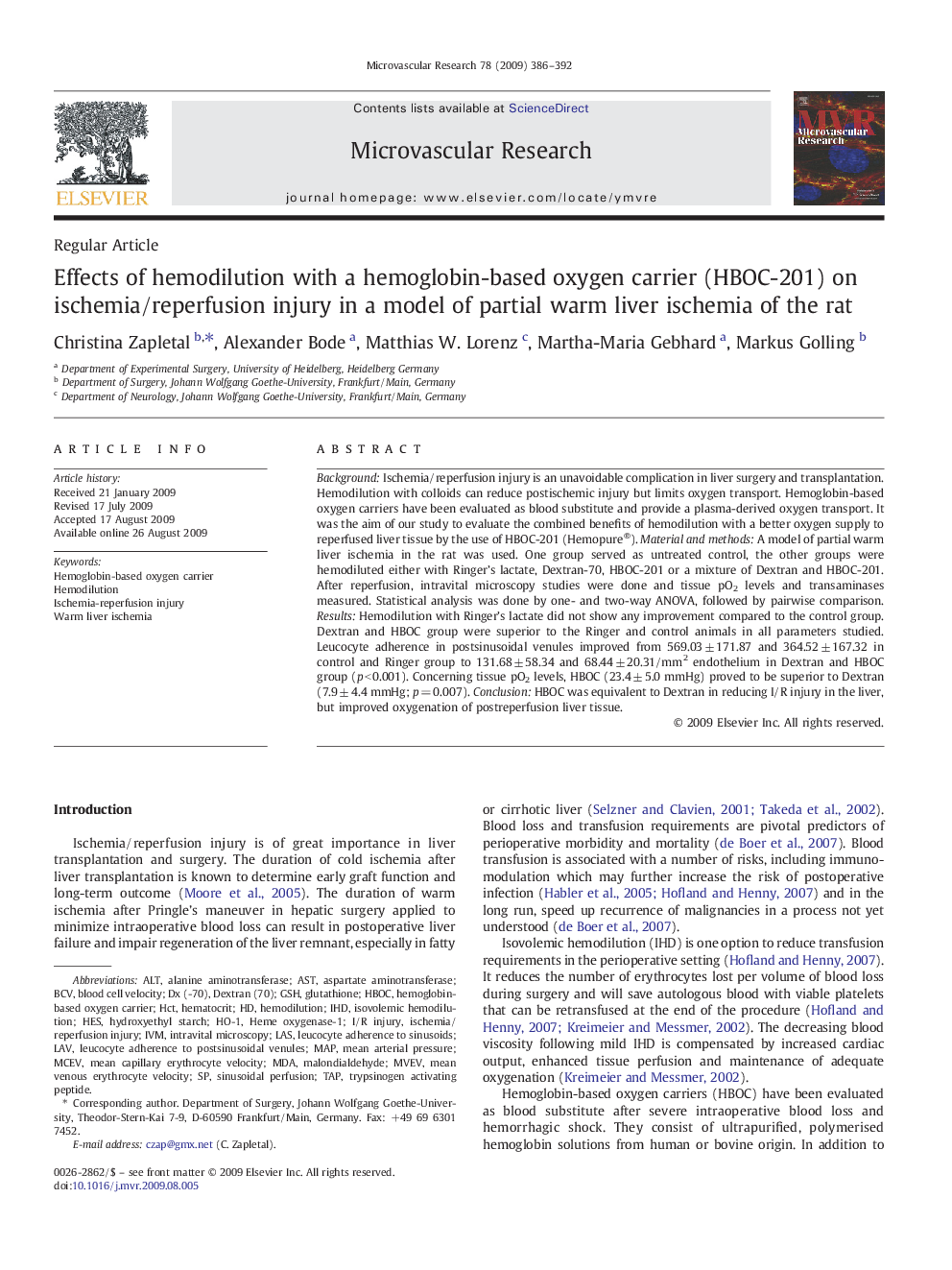| Article ID | Journal | Published Year | Pages | File Type |
|---|---|---|---|---|
| 1995311 | Microvascular Research | 2009 | 7 Pages |
BackgroundIschemia/reperfusion injury is an unavoidable complication in liver surgery and transplantation. Hemodilution with colloids can reduce postischemic injury but limits oxygen transport. Hemoglobin-based oxygen carriers have been evaluated as blood substitute and provide a plasma-derived oxygen transport. It was the aim of our study to evaluate the combined benefits of hemodilution with a better oxygen supply to reperfused liver tissue by the use of HBOC-201 (Hemopure®).Material and methodsA model of partial warm liver ischemia in the rat was used. One group served as untreated control, the other groups were hemodiluted either with Ringer’s lactate, Dextran-70, HBOC-201 or a mixture of Dextran and HBOC-201. After reperfusion, intravital microscopy studies were done and tissue pO2 levels and transaminases measured. Statistical analysis was done by one- and two-way ANOVA, followed by pairwise comparison.ResultsHemodilution with Ringer’s lactate did not show any improvement compared to the control group. Dextran and HBOC group were superior to the Ringer and control animals in all parameters studied. Leucocyte adherence in postsinusoidal venules improved from 569.03 ± 171.87 and 364.52 ± 167.32 in control and Ringer group to 131.68 ± 58.34 and 68.44 ± 20.31/mm2 endothelium in Dextran and HBOC group (p < 0.001). Concerning tissue pO2 levels, HBOC (23.4 ± 5.0 mmHg) proved to be superior to Dextran (7.9 ± 4.4 mmHg; p = 0.007).ConclusionHBOC was equivalent to Dextran in reducing I/R injury in the liver, but improved oxygenation of postreperfusion liver tissue.
